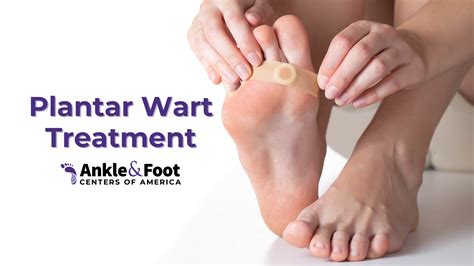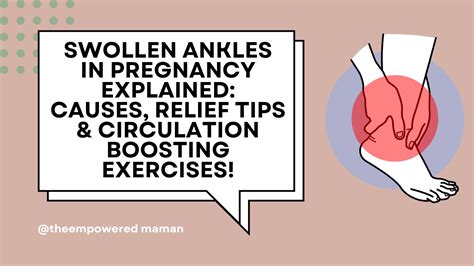The presence of a plantar wart on the sole of the foot can be a source of significant discomfort and embarrassment. These warts, caused by the human papillomavirus (HPV), can make every step feel like a chore, affecting daily activities and overall quality of life. Understanding the various treatment options available is crucial for individuals seeking relief from this condition.
Overview of Plantar Warts
Before delving into the treatments, it’s essential to understand what plantar warts are. They are small, rough growths that appear on the heel or ball of the foot, often feeling like a small, hard bump. The virus that causes plantar warts enters the body through cuts or cracks in the skin, leading to the formation of these unwanted growths.
Conservative Treatments
For many individuals, the first line of defense against plantar warts involves conservative treatments that can be applied or administered at home or in a clinical setting. These include:
- Salicylic Acid: A common over-the-counter treatment, salicylic acid works by gradually dissolving the keratin protein that makes up the wart and the dead skin around it. It’s crucial to use this treatment as directed to avoid irritating the surrounding skin.
- Duct Tape Occlusion: This home remedy involves covering the wart with duct tape for an extended period, with the idea being that the lack of oxygen and the irritation from the tape can help eliminate the wart. However, its effectiveness can vary greatly from person to person.
- Cryotherapy: Performed by a healthcare professional, cryotherapy involves freezing the wart with liquid nitrogen. This causes a blister to form under and around the wart, cutting off its blood supply. The dead tissue eventually falls off, ideally taking the wart with it.
Advanced Treatments
For warts that are particularly stubborn or large, more advanced treatments may be necessary. These include:
- Cantharidin: Applied by a doctor, cantharidin is a blistering agent derived from the secretions of the blister beetle. It’s applied directly to the wart and then covered. The blister that forms should be left intact to allow the treatment to be most effective.
- Laser Treatment: Some podiatrists and dermatologists offer laser treatment for plantar warts. This involves using a laser to target and destroy the wart tissue. It can be more expensive and may require multiple sessions, but it’s a viable option for resistant cases.
- Surgical Removal: In severe cases where other treatments have failed, surgical removal of the wart may be recommended. This can involve a simple procedure to cut out the wart or more complex techniques like electrosurgery or curettage.
Home Care and Prevention
While treating the wart is crucial, preventing its spread and recurrence is equally important. Home care tips include:
- Keeping the Foot Clean: Regular washing, especially after treating the wart, is essential.
- Changing Socks Frequently: To prevent moisture buildup, which can encourage the spread of the virus.
- Avoiding Direct Contact: Refraining from touching or scratching the wart, as this can spread the virus to other parts of the body or to others.
- Avoiding Walking Barefoot: Especially in public areas like swimming pools, locker rooms, and communal showers, where the risk of acquiring or spreading the virus is higher.
Future Directions in Treatment
Research into more effective and less invasive treatments for plantar warts is ongoing. This includes the exploration of immunotherapy, which aims to enhance the body’s immune response to fight off the HPV virus naturally, and the development of new topical treatments that can more effectively target and destroy wart tissue without damaging surrounding skin.
Considerations for Treatment Selection
When deciding on a treatment plan, several factors should be considered, including the size and location of the wart, the individual’s overall health and medical history, and any previous treatments that have been tried. It’s also essential to consult with a healthcare professional to determine the best course of action, as some treatments can have side effects or interact with other health conditions.
Conclusion
Plantar warts can be a challenging condition to manage, but with the right treatment approach, relief is possible. Whether through conservative methods or more advanced treatments, individuals can find a solution that works for them. It’s crucial to be patient, as treating plantar warts can take time, and to maintain good foot hygiene to prevent recurrence. By understanding the options available and working closely with a healthcare provider, individuals can say goodbye to the discomfort and embarrassment of plantar warts and hello to healthier, happier feet.
Frequently Asked Questions
How do I know if I have a plantar wart?
+A plantar wart is typically identified by its location on the sole of the foot, feeling like a small, hard bump. It may also cause pain when pressure is applied, especially when walking or standing. Consulting a healthcare professional for an accurate diagnosis is crucial, as the appearance and symptoms can sometimes be similar to those of other conditions.
Can plantar warts be prevented?
+While not all cases can be prevented, taking certain precautions can significantly reduce the risk of acquiring plantar warts. This includes avoiding walking barefoot in public areas, keeping the feet clean and dry, and avoiding direct contact with warts on oneself or others.
How long does it take to treat a plantar wart?
+The duration of treatment for plantar warts can vary significantly depending on the size and depth of the wart, the treatment method chosen, and the individual’s response to treatment. Some treatments may show results within a few weeks, while others may take several months. Patience and persistence, along with the guidance of a healthcare professional, are key to successful treatment.
Can I treat a plantar wart at home?
+Yes, there are several over-the-counter treatments and home remedies that can be used to treat plantar warts. However, it’s essential to consult with a healthcare professional first, especially if you’re unsure about the diagnosis or if the wart is large, painful, or in a sensitive area. Some conditions may resemble warts but require different treatments, and improper treatment can lead to complications.
Are plantar warts contagious?
+Yes, plantar warts are contagious. They are caused by the human papillomavirus (HPV), which can be spread through direct contact with a wart or indirectly through contact with contaminated surfaces or objects. Practicing good hygiene, such as washing hands regularly and avoiding sharing personal items, can help prevent the spread of the virus.
Can children get plantar warts?
+Yes, children can get plantar warts. In fact, children and teenagers are more likely to develop plantar warts due to their increased exposure to the HPV virus in environments like swimming pools and locker rooms. Educating children on proper foot hygiene and the importance of wearing footwear in public areas can help reduce the risk.



